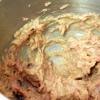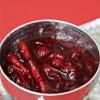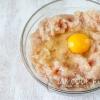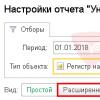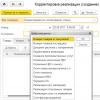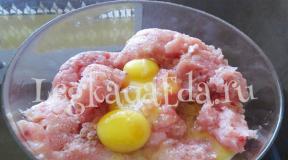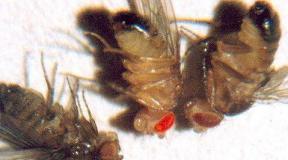Red solution for treating wounds. Fukortsin (Castellani Paint) instructions for use. When is fucorcin used?
Fukortsin has been used for many years to treat superficial skin lesions. This product, which has disinfectant, antiseptic and antibacterial properties, is used for purulent inflammation, fungus, and mechanical injuries on the skin.
Description of the drug
Fukortsin is produced in a single form - it is a solution used externally for the treatment of various skin lesions. The burgundy liquid has a pungent alcohol-phenolic odor and is bottled in 10, 15 and 25 ml bottles. Some manufacturers' bottles are equipped with special dropper stoppers or dispensers to make the solution more convenient to apply.
Fukortsin is also called “red green”, since its effect is similar to a solution of brilliant green.
Components of the solution:

In addition to these substances, the medicine contains distilled water, ethyl alcohol and acetone.
Effect of the drug
The components of the solution determine its three main properties - antiseptic, antifungal and disinfectant. Phenol, together with resorcinol, destroys microbial cells, causing pathogenic microorganisms to die, and inflammatory and infectious processes on the skin are stopped. Thanks to the powerful antiseptic properties of its components, Fukortsin has a detrimental effect on almost all types of pathogenic microorganisms.

The solution is used to treat various types of wounds to disinfect them, prevent infection and the occurrence of suppuration, and to stop the inflammation process that has already begun. The medication is also used in the treatment of skin diseases of pustular and fungal pathogenesis.
Indications for use
The solution has the ability to prevent the development of inflammation and prevent the possibility of infection. Fukortsin treats skin damage that is accompanied by infections, as it accelerates regeneration and quickly eliminates any suppuration and inflammation.
The solution is used for various indications. It is used to treat:

The medicinal solution is effective if skin lesions need to be dried and to prevent the likelihood of inflammation and infections.
Instructions for use
The solution is applied exclusively by the point method, directly to areas of damage, to pustular areas, or locally to foci of fungal infection. Treatment with Fukortsin is done using a glass (cotton) swab or cotton pad.

When the solution dries on the skin, you can apply other topical medications on top of it.
Fukortsin is not used on open wounds, because one of the components of the solution is acetone.
Scheme of use for adults:

When the solution gets on the wound, short-term itching and burning may occur at the site of application, but such irritating phenomena will stop by themselves after a couple of minutes. If the discomfort persists for more than five minutes, then this is already considered a sign of the development of an allergy.
Fukortsin contains a dye, so the solution colors any surfaces with which it comes into contact. At the same time, it is quite difficult to wipe off and remove from fabrics, so the medicine should be handled very carefully.

What is Fukortsin used for in children?
Pediatricians prescribe Fukortsin to children from birth - this is explained by the fact that no adverse events were identified when using the drug in children, but the effectiveness of the drug is very high. Doctors note that when treating large lesions with Fukortsin, phenol can penetrate into the bloodstream, and the solution itself dries out the skin greatly. Therefore, in children under five years of age, the use of the medicine is recommended for use only on small skin surfaces, and treatment should not be long-term.
For babies under one year of age, only a diluted solution is used: diluted with water in a concentration of 1:1.
For children from one to five years of age, use is similar to the scheme of use for adults, but taking precautions.

It is advisable to use the medicine only in the first days after the problem is discovered. As soon as the healing process begins, it is better to stop treatment with the solution. When applying the medicine to the baby's limbs, back or chest, it is necessary to give the solution time to dry, and then put clothes on the baby or cover it with a blanket. For children, 2-3 applications per day are enough, and the pink solution should not be used for more than seven days in a row.
For the treatment of various diseases
Fukortsin solution is used to treat a variety of skin lesions and is used in complex therapy for a number of diseases:


The medicinal solution is used for various fungal diseases if they are superficial, that is, there are no crusts, ulcers, suppurations or scabs at the site of the fungus. With the help of Fukortsin, wounds of various types are treated, but the product is not used in the presence of extensive wound surfaces and in open wounds.
Warnings for use
The use of Fukortsin is prohibited for patients who have hypersensitivity to any of the components of the drug. Also, you should not use the medicine if your skin is hypersensitive or if you are prone to allergic reactions. If the medication is used incorrectly, you can get serious skin irritations and even burns. Fukortsin is used with extreme caution before the age of 12.
Treatment with Fukortsin is prohibited for pregnant and nursing mothers.
Fukortsin usually does not cause any negative effects; occasionally, minor allergic reactions may occur in the area of application.

They usually disappear within a few minutes on their own, but if the condition worsens, the medicine should be discontinued immediately.
special instructions
If contraindications are ignored and if the Fukortsin dosage regimen is violated, symptoms of overdose may occur: severe weakness, attacks of dizziness, trouble breathing. If such phenomena develop, you should try to remove the remaining solution from the skin and, if necessary, drink an antihistamine.
The solution does not affect the ability to operate various mechanisms and a car, so during treatment with Fukortsin you can engage in any activity. But, if large areas of skin are treated with the solution, allergic reactions may develop and large amounts of phenol may be absorbed into the bloodstream. In these cases, there is a risk of overdose symptoms, which means it is better to refrain from driving and activities that require concentration and attention.
Analogues and substitutes
Fukortsin has no analogues that have an identical set of components. But there are a number of medications that have a similar principle of action.
Fukortsin also has a colorless analogue - Acerbine (or Castellani liquid). This drug has a weaker effect due to the absence of fuchsin in its composition. The average cost of Acerbine is from 380 rubles per bottle, which is significantly higher than the price of regular Fukortsin - 30-55 rubles per bottle.
0The site provides reference information for informational purposes only. Diagnosis and treatment of diseases must be carried out under the supervision of a specialist. All drugs have contraindications. Consultation with a specialist is required!
Fukortsin is a disinfectant and antiseptic for external use, which is used to treat various wounds, erosions, cracks, abrasions, as well as pustular and fungal diseases of the skin.Release forms and composition
Fukortsin is also called red brilliant green or Castellani liquid.Currently, Fukortsin is produced in a single dosage form - this solution for external use. Fukortsin does not exist in ointment form.
Fukortsin solution is a liquid, dark red in color, and has a specific smell of phenol. The solution is poured into orange glass bottles of 10 ml, 15 ml and 25 ml. Some bottles are equipped with dropper stoppers or stoppers with swabs for easy application of the solution to the skin.
 The composition of the Fukortsin solution as active substances includes the following components:
The composition of the Fukortsin solution as active substances includes the following components:
- Boric acid – 0.8 g;
- Resorcinol – 7.8 g;
- Phenol – 3.9 g;
- Basic fuchsin (dye) – 0.4 g.
Fukortsin solution must be stored in orange glass bottles in which it is sold in pharmacies, without pouring into another container, since the product is sensitive to light. Accordingly, Fukortsin should be stored in a dark place, at an ambient temperature no higher than 25 o C.
Therapeutic effect
 Fukortsin solution has antiseptic, disinfectant and antifungal effect, which is provided by the effects of the active components included in its composition.
Fukortsin solution has antiseptic, disinfectant and antifungal effect, which is provided by the effects of the active components included in its composition. Boric acid, phenol and resorcinol disrupt the integrity of the cell wall of pathogenic microorganisms, thereby causing their death and stopping infectious and inflammatory processes on the skin. Since the components of Fukortsin have antiseptic properties, they have a detrimental effect on a wide range of microorganisms, including fungi.
Accordingly, Fukortsin is used for two main purposes. Firstly, for the external treatment of various wounds of the skin for the purpose of disinfecting them, preventing suppuration and infection, as well as stopping an already developed infectious process. And secondly, for the treatment of pustular and fungal diseases of the skin.
Indications for use
Fukortsin solution is indicated for use for the following conditions or diseases:- Violations of the integrity of the skin (superficial wounds, erosions, cracks, abrasions);
- Pustular skin diseases (for example, impetigo, acne, etc.);
- Fungal skin diseases.
Instructions for use
Instructions for use of Fukortsin solution
 Fukortsin solution can be used to treat any damage to the skin, such as wounds, abrasions, erosions, cracks, etc. In this case, Fukortsin is used, firstly, for the antiseptic treatment of wounds in order to prevent their infection and the addition of an infectious process with suppuration, weeping and prolonged non-healing. Secondly, Fukortsin is used to treat already infected skin wounds in order to stop the inflammatory process, eliminate suppuration and weeping, and subsequently accelerate healing. This means that any wounds formed on the skin as a result of various causative factors can and should be lubricated with Fukortsin. Thus, it is possible to treat abrasions received by children during falls, and opened calluses, and squeezed out ulcers, and non-healing, weeping umbilical wounds in infants, and inflamed elements of rashes (for example, with dermatitis, eczema, allergies, prickly heat), etc. Only open wounds cannot be treated with Fukortsin, since it contains acetone and fuchsin dye. Lubricating any wounds on the skin with Fukortsin is necessary to prevent infection, drying and stopping the inflammatory process.
Fukortsin solution can be used to treat any damage to the skin, such as wounds, abrasions, erosions, cracks, etc. In this case, Fukortsin is used, firstly, for the antiseptic treatment of wounds in order to prevent their infection and the addition of an infectious process with suppuration, weeping and prolonged non-healing. Secondly, Fukortsin is used to treat already infected skin wounds in order to stop the inflammatory process, eliminate suppuration and weeping, and subsequently accelerate healing. This means that any wounds formed on the skin as a result of various causative factors can and should be lubricated with Fukortsin. Thus, it is possible to treat abrasions received by children during falls, and opened calluses, and squeezed out ulcers, and non-healing, weeping umbilical wounds in infants, and inflamed elements of rashes (for example, with dermatitis, eczema, allergies, prickly heat), etc. Only open wounds cannot be treated with Fukortsin, since it contains acetone and fuchsin dye. Lubricating any wounds on the skin with Fukortsin is necessary to prevent infection, drying and stopping the inflammatory process. In addition, Fukortsin solution can be used for local treatment of fungal and pustular (pyoderma, impetigo, etc.) skin diseases.
Fukortsin must be applied pointwise to areas of damaged skin (wounds, abrasions, scratches, cracks, etc.), to areas of pustular rashes or locally to areas of fungal infection. The solution should be applied with a glass or cotton swab, cosmetic disc or cotton swab. Skin lesions should be treated 2–4 times a day. It is allowed to treat the skin with Fukortsin a maximum of 5 times a day. After Fukortsin applied to the skin has dried, any other external products can be applied on top of it, such as ointments, pastes, liniments, lotions, foams, etc. The duration of use of Fukortsin is determined by the rate of disappearance of symptoms of the inflammatory process on the skin. In general, Fukortsin can be used for a long time.
In order not to contaminate all the liquid in the vial, it is necessary to pour a small amount of the solution into a small container (for example, a glass, a measuring stopper from another medicine). Next, to treat damaged areas of the skin, you should take the Fukortsin solution onto a stick, cotton swab or cosmetic disc from a small container into which the product was poured from the bottle. After all affected areas of the skin have been treated, the remainder of the poured Fukortsin should be poured out of the small container, and the container itself should be washed with water and detergent. For each subsequent treatment, it is necessary to re-pour a little liquid and use it, and not the solution from the bottle.
When applied to wounds, Fukortsin can cause short-term burning and itching, but these phenomena normally subside within 1 to 3 minutes. If the itching and burning after applying Fukortsin did not go away within 5 minutes or began to intensify, then this is no longer a normal reaction, but is considered a manifestation of an allergy. In such cases, you should immediately stop using Fukortsin, wash it off the skin (see methods below, in the section “How to wash off Fukortsin?”) and take an antihistamine (Suprastin, Telfast, Claritin, etc.).
Fukortsin should be applied pointwise or locally to areas of damaged skin, and not to lubricate the skin over a continuous field. This requirement is due to the fact that when Fukortsin is applied to large areas of the skin, phenol, which is part of the solution, can be absorbed into the bloodstream, which can cause toxic effects (dizziness, weakness, breathing problems).
Fukortsin has a specific odor and can stain linen, clothing and any surfaces it comes into contact with. At the same time, Fukortsin is difficult to wipe off from various surfaces and does not wash well from fabrics, so the solution should be used carefully so as not to stain linen, clothes and household items (furniture, carpets, etc.).
Overdose
Overdose is possible with long-term use or when treating large areas of the skin with Fukortsin. In such cases, symptoms of overdose include signs of phenol poisoning (which is absorbed into the bloodstream), such as dizziness, weakness, and breathing problems. If signs of overdose appear, you should immediately stop using Fukortsin, go out into fresh air and, if necessary, carry out symptomatic treatment aimed at maintaining the normal functioning of vital organs.Impact on the ability to operate machinery
Fukortsin usually does not affect a person’s ability to control mechanisms, therefore, while using the solution, you can engage in any type of activity, including those requiring a high speed of reactions and concentration. However, if large surfaces of the skin are treated with Fukortsin, phenol may be absorbed into the bloodstream, which can cause dizziness, weakness and breathing problems, and in such situations you should refrain from various activities that require a high reaction rate or concentration.Interaction with other drugs
Fukortsin does not significantly interact with other drugs, so the solution can be used together with other drugs for both external use and oral administration.How to wash Fukortsin (how to wash the solution from skin, clothes, furniture)?
 You can wash Fukortsin solution from the skin in the following ways:
You can wash Fukortsin solution from the skin in the following ways:1. Prepare the following solution: mix 2 tablespoons of ammonia and 3 tablespoons of hydrogen peroxide 3%. You need to wipe the stained skin with this composition, and the burgundy color will disappear from the skin without a trace. After treating the skin with a mixture of ammonia and hydrogen peroxide, you need to wash off the remaining product from the skin with running water.
2. Prepare a mixture of grated laundry soap with hydrogen peroxide or ammonia. Hydrogen peroxide or ammonia should be added to the soap until a paste forms. This paste is applied to Fukortsin spots on the skin, left for a few minutes, and then washed off with water.
3. Soak a cotton swab or cosmetic pad in alcohol or vodka and wipe the skin stained with Fukortsin. Then wash the treated leather with water and laundry soap, and the burgundy color will come off without a trace.
To remove Fukortsin stains from teeth you need to mix a tablespoon of baking soda with the juice of half a lemon. This solution should be applied to a toothbrush and brush your teeth thoroughly. Fukortsin stains will disappear completely after the procedure.
You can remove Fukortsin stains from clothes made of synthetic fabrics by simply washing them with laundry soap in warm water. A for removing Fukortsin stains from natural fabrics(clothes, linen, carpets) you can use the following recipes:
- Lubricate the stains with a universal stain remover pencil from Faberlic. The stains should be rubbed with a pencil until the burgundy color is completely gone. After using the stain remover, you need to wash your laundry or clothes as usual.
- Lubricate Fukortsin stains with toothpaste and leave it on the fabric for 10 - 15 minutes. After this, you should wash the stains in warm water and laundry soap. After treating with toothpaste followed by washing with laundry soap, Fukortsin stains will completely come off the fabric.
- Make a strong solution of laundry soap and add ammonia to it. Apply the soap-alcohol mixture to the stains, leave for 10 - 15 minutes, then rinse with water.
Fukortsin for children
General provisions
 The official instructions adopted by the Russian Ministry of Health do not indicate that Fukortsin should not be used to treat skin diseases in children. However, in many countries, a restriction has been adopted on the use of Fukortsin in children under 5 years of age, which consists in the fact that in children from birth to 5 years of age, only small areas of skin (for example, the umbilical wound) can be treated with the solution, and it cannot be applied to a large area . This limitation is due to the presence of phenol in the solution, which can be absorbed into the bloodstream and cause toxic effects (dizziness, fatigue, breathing problems) if Fukortsin is applied to a large surface area of the skin.
The official instructions adopted by the Russian Ministry of Health do not indicate that Fukortsin should not be used to treat skin diseases in children. However, in many countries, a restriction has been adopted on the use of Fukortsin in children under 5 years of age, which consists in the fact that in children from birth to 5 years of age, only small areas of skin (for example, the umbilical wound) can be treated with the solution, and it cannot be applied to a large area . This limitation is due to the presence of phenol in the solution, which can be absorbed into the bloodstream and cause toxic effects (dizziness, fatigue, breathing problems) if Fukortsin is applied to a large surface area of the skin. However, despite the danger of phenol being absorbed into the bloodstream, pediatricians in the countries of the former USSR willingly and often prescribe Fukortsin for children from birth. This practice is due to the fact that the drug has been used for quite a long time, and according to observational experience, it rarely causes any undesirable effects. That is, the potential danger of using Fukortsin in children under 5 years of age is low, but the effectiveness of the solution is very high and undoubted.
When using Fukortsin in children, it is necessary to remember that the solution dries the skin, and when treating large surfaces, phenol can be absorbed into the bloodstream. Therefore, the solution should be used in children under 5 years of age only to treat small areas of the skin surface, and for the shortest possible time.
Instructions for use of Fukortsin for children
For children under one year of age, Fukortsin solution is recommended to be diluted with water in a 1:1 ratio and used in a diluted form to minimize the risk of potential negative effects. For children aged 1 to 5 years, Fukortsin solution can be used in pure form or diluted with water, with caution. By being careful, doctors mean the need to apply Fukortsin to as small an area of skin as possible and for the shortest possible time. That is, it is optimal to apply the solution pointwise, and stop using it as soon as there is no longer a need for it and it is possible to leave wounds, inflammations, ulcers, cracks or rashes without treatment, since the obvious healing process has already begun (for example, the rashes have dried up, the wounds have become covered crust, etc.).It is necessary to treat a child’s skin with Fukortsin 2–4 times a day, maximum up to 5 times a day. The solution should not be applied to the skin more than 5 times a day, since in this case phenol may be absorbed into the bloodstream with the development of toxic reactions (dizziness, fatigue and breathing problems).
Fukortsin should be applied to the skin with a cotton or glass swab, cotton swab or cosmetic disc. To do this, dip the stick into the solution, lift it, wait for the drops to drain from it, and then gently touch the damaged area of the skin. If a cotton swab or cosmetic disc is used, then the solution is applied to them, pressing them to the neck of the bottle and turning it upside down. When Fukortsin is on the disc or tampon, it is quickly applied to the skin.
After applying Fukortsin to the skin, you should wait a few minutes until the solution dries so that it does not stain your clothes so much, and then get dressed. If necessary, after Fukortsin dries on the skin, pastes and ointments can be applied on top of it.
In order not to stain your hands and pieces of furniture, it is recommended to open the bottle with Fukortsin with a cosmetic disc or any soft cloth so that traces of the solution remain on it, and not on the skin and furniture.
Treatment of various diseases with Fukortsin
Fukortsin for chickenpox
 Chickenpox rashes can be treated with Fukortsin, since the solution reduces itching and inflammation, and also promotes the rapid formation of crusts and, accordingly, recovery. In addition, when large chickenpox rashes are treated with Fukortsin, they heal without the formation of scars or marks on the skin.
Chickenpox rashes can be treated with Fukortsin, since the solution reduces itching and inflammation, and also promotes the rapid formation of crusts and, accordingly, recovery. In addition, when large chickenpox rashes are treated with Fukortsin, they heal without the formation of scars or marks on the skin. For chickenpox, rashes are treated by applying Fukortsin pointwise to the elements of the rash with a cotton swab or glass swab. Fukortsin must be applied to the elements of the rash 2-3 times a day so that they are constantly covered with a layer of solution. The drug should be used until the crusts fall off at the site of the rash. After stopping the use of Fukortsin, the stains on the skin from it should be left and not washed off specifically for 10 - 14 days after the crusts fall off.
Fukortsin for treating wounds in the mouth
Fukortsin can be used to treat wounds in the mouth only in short courses lasting less than seven days, and only treat small ulcers. This means that the solution can be applied to the wounds for a maximum of 7 days, after which the use of Fukortsin should be stopped, regardless of how successful the therapy was. It is also necessary to remember that only a small area of the mucous membrane can be treated with the solution, that is, the drug can be applied pointwise, exclusively to the ulcers.For spot treatment of ulcers, it is necessary to touch a cotton swab moistened with Fukortsin directly to the defect on the mucous membrane. Treatment of wounds in the mouth should be done 2–4 times a day, but no more than 5 times. After treating the wounds, you must refrain from drinking and eating for 20–30 minutes.
Fukortsin for wounds
 If the wound surface is large (more than 2x2 cm) or the wound is open ("meat" is visible from the defect on the skin), then Fukortsin cannot be used for their treatment, since in such situations phenol will be absorbed into the systemic bloodstream with the development of toxic reactions (dizziness, fatigue , breathing problems).
If the wound surface is large (more than 2x2 cm) or the wound is open ("meat" is visible from the defect on the skin), then Fukortsin cannot be used for their treatment, since in such situations phenol will be absorbed into the systemic bloodstream with the development of toxic reactions (dizziness, fatigue , breathing problems). But if the wounds are small and not open, then Fukortsin can be used to treat them. In such cases, the solution can be used to prevent wound infection and accelerate their healing, or to treat an existing inflammatory process in the wound. In both cases, Fukortsin is applied to the wound 2-4 times a day until the resulting crusts fall off. In principle, you can stop using Fukortsin when the wounds become covered with crusts. But if you use the solution during the healing period of the wound under the crust, then restoration of the integrity of the skin will occur faster and with minimal risk of scar formation. If you stop using Fukortsin after crusts form, healing will proceed more slowly, and the risk of scar formation will be higher.
Fukortsin for nails
 Fukortsin solution is indicated for use for the prevention of fungal infections, as well as for the treatment of various traumatic injuries to the nail plate.
Fukortsin solution is indicated for use for the prevention of fungal infections, as well as for the treatment of various traumatic injuries to the nail plate. To prevent fungal infections, it is recommended to treat nail plates with Fukortsin 1-2 times a week. In this case, the solution must be applied to the entire nail, like nail polish. Fukortsin is not suitable for the treatment of an existing fungal nail infection, since it does not penetrate deep into the tissue of the nail plate and, accordingly, does not destroy the spores of the pathogenic fungus. And if the fungal spores are not destroyed, the disease will recur again after a while.
To treat various traumatic injuries to the nail plate (for example, nail fractures in the area of its attachment to the nail bed, nail deformation, cutting too short, etc.), Fukortsin is applied to the wound area 2-4 times a day. In this case, you should try to treat not only the damaged area, but also the skin around it. Thanks to the use of Fukortsin, the damaged areas of the nails do not become inflamed or infected, and the nail itself grows, acquiring a normal shape and size.
In addition, it should be separately noted that Fukortsin is able to cure felon if you start using the solution at the initial stages of its development. In other words, if you start applying Fukortsin when the panaritium has just begun to form, then this pathological process can be stopped. If you suspect the formation of panaritium, it is recommended to apply a few drops of Fukortsin directly to the area where the nail has grown into the skin, 1-2 times a day for a week. During this time, the solution will stop inflammation of the skin and soft tissues around the nail plate and stop the nail from growing into the skin, as a result of which the panaritium will be cured at an early stage.
Fukortsin for fungus
 Fukortsin solution is an effective drug for the treatment of superficial skin fungal infections, but is not suitable for the treatment of fungal infections of the nails. This means that the solution can treat fungal skin infections if they are superficial (there is hair on the skin in the area of the fungal infection and there are no ulcers, crusts, scabs, suppurations, etc.), but it cannot treat nail fungus.
Fukortsin solution is an effective drug for the treatment of superficial skin fungal infections, but is not suitable for the treatment of fungal infections of the nails. This means that the solution can treat fungal skin infections if they are superficial (there is hair on the skin in the area of the fungal infection and there are no ulcers, crusts, scabs, suppurations, etc.), but it cannot treat nail fungus. To treat skin fungal infections, Fukortsin should be applied to the affected areas 2 to 4 times a day until the skin cleanses and acquires a normal appearance and structure. In this case, it is necessary to throw away the cotton swabs or cosmetic discs that are used to apply the solution to the skin after each use, and do not allow other people to touch them so that they do not become infected.
Fukortsin on the face
 Fukortsin solution can be used for spot treatment of inflammatory rashes on the face, such as pimples, blackheads, elements of streptoderma, etc. In this case, the drug should be applied pointwise, exclusively to the rashes, and not to lubricate the entire skin of the face.
Fukortsin solution can be used for spot treatment of inflammatory rashes on the face, such as pimples, blackheads, elements of streptoderma, etc. In this case, the drug should be applied pointwise, exclusively to the rashes, and not to lubricate the entire skin of the face. Fukortsin is applied to the elements of rashes on the face with a cotton swab 2-4 times a day until they heal or a crust forms on them. As a rule, pimples become small, unnoticeable, not swollen and not inflamed after treating them once or twice with Fukortsin. If you apply Fukortsin to pimples a few more times, they will either go away completely or transform into small and dense pustules that are easily squeezed out without leaving scars or marks (post-acne).
Fukortsin - analogues
 Fukortsin solution has no analogues for the active substance, but has analogues for its therapeutic effect. This means that analogues of Fukortsin on the domestic pharmaceutical market are drugs containing other active substances, but having the same spectrum of therapeutic action.
Fukortsin solution has no analogues for the active substance, but has analogues for its therapeutic effect. This means that analogues of Fukortsin on the domestic pharmaceutical market are drugs containing other active substances, but having the same spectrum of therapeutic action. Fukortsin analogues include the following drugs:
- Acerbine ointment and solution for external use;
- Diamond green (zelenka) solution for external use;
- Octenisept solution for external and local use;
- Saledez alcohol solution for external use;
- Salicylic-zinc paste with Levomycetin for external use;
- Sangviritrin liniment for external and local use;
- Teimur paste for external use;
- Fucaseptol solution for external use.
Fukortsin solution (another name for Castellani Paint) is a disinfectant and disinfectant liquid substance for external use, which today is actively used for the treatment of lacerations, the treatment of skin erosions, as well as abscesses and fungal formations.
The drug Fukortsin looks like a liquid product, sealed in a dark brown glass bottle with a volume of 10, 15 or 25 ml. The bottle is equipped with a built-in pipette or stopper with a shaving brush (depending on the bottle). The solution itself has a rich fuchsia color and has a very specific aroma, vaguely reminiscent of the smell of gouache. The manufacturer also produces Fukortsin pencil with a hard porous tip.
It is because of its bright color that Fukortsin’s solution is called “red green” by many. It, like the usual “Brilliant Green” solution, leaves characteristic imprints on the skin. True, they are not green, but purple.
In pharmacies today you can also buy a colorless version of Fukortsin, but this modification of the drug is not always convenient to use. For example, colorless Fukortsin does not appear on the skin when treating multiple rashes in the case of chickenpox, and when applying it, it is impossible to understand which of the pimples have already been treated with the solution.
The composition of the Fukortsin solution includes the following components:
- boric acid, which acts as an antiseptic;
- resorcinol, which causes protein coagulation and the death of vegetative microorganisms;
- hydroxybenzene;
- rosaniline hydrochloride, which exhibits antistaphylococcal activity;
- as well as additional substances - acetone, methylcarbinool and purified water.
This solution content helps destroy the cell membrane of pathogenic microbes, provokes their death and stops inflammatory processes on the skin. It also has a detrimental effect on most microorganisms, including fungi.
What is this drug for?
Fukortsin can be used to disinfect various skin defects:
- for fungal diseases - lichen, mycosis, foot fungus, etc.;
- for pustular formations - acne, contagious impetigo, inflammation of the middle and deep parts of the hair follicle, and more;
- for shallow wounds, calluses and small tears in the epidermis;
- for microbial eczema, superficial candidiasis, mycoses, athlete's foot, lichen;
- as well as with the appearance of oily or mixed forms of seborrhea.
In addition, Fukortsin solution is used to treat the itchy rash that appears during chickenpox. And it is applied to existing pimples not with the goal of destroying the virus that causes the rash, but to prevent recurrent bacterial infection due to scratching of the inflammatory elements. Applying “red green paint” during chickenpox also slightly reduces the itching, speeds up the process of the healing film appearing, and allows you to instantly notice new pimples if they arise. Fukortsin acts in a similar way for herpes.
Instructions for use
Fukortsin, according to the instructions for use attached to the solution, is applied to the treated area pointwise. For this, a flagellum twisted from cotton wool or a glass rod is used. You can also blot a small piece of cotton wool with the solution, and then apply it locally to the areas of fungal inflammation.
In order not to contaminate all the liquid in the bottle, a small amount of the drug should be poured into a previously prepared shallow container before use. After the lesion has been treated with this disinfectant, the remainder of the solution must be poured out of the container used, and the container itself must be thoroughly cleaned with soap and rinsed with water. Before each treatment of wounds or pustular lesions, the medicine from the bottle must be poured into the container again.
For infants, Fukortsin solution is diluted with boiled water in a 1:1 ratio. This is done in order to reduce the risk of possible negative effects on the child’s body from using the solution.
For children aged from one to five years, Fukortsin, according to the instructions for use for children, can already be applied undiluted. The only caveat: in preschool age, you should follow all precautions - you can only apply the product to a small area of skin and leave it on for a minimum period.
After the treated surface has dried and the unpleasant itching sensations after using Fukortsin have passed, any other preparations can be applied to this area of the skin: ointments, creams, gels, lotions or foams. If the itching and burning after using the product continues for more than five minutes, then you need to immediately wash the drug off the skin and take an antiallergic medicine: Suprastin, Cetrin, etc.
The use of Fukortsin and washing the affected areas of the skin with it is allowed from two to four times a day. The maximum permissible number of treatments in 24 hours is 5 times. If you use the product more than five times a day, this will lead to intoxication of the body.

Contraindications
Despite its highly pronounced therapeutic properties, a medicine such as Fukortsin has some contraindications. These include:
- bearing a fetus during pregnancy and the lactation period - due to the phenol that is part of the solution and penetrates the placenta or breast milk, certain harm is caused to the fetus or child;
- extensive damage to the skin;
- the presence of open wounds - phenol also has a negative effect on the body, this component is quickly absorbed into the bloodstream and causes various toxic reactions;
- individual intolerance to any component in the contents of the solution.
Analogs
Fukortsin solution can be easily replaced with any medicinal liquid that has similar antimycotic and antimicrobial properties - ordinary iodine, an alcohol solution of “Brilliant Green”, Lead water or medical alcohol.
And also in this group it is worth noting medicines that have the same pharmacological effect as Fukortsin. Analogs of this type: Askosept, Saledez, Drapolen, Fucaseptol, etc. For pregnant women and nursing mothers, instead of Fukortsin, it is better to use Chlorophyllipt.
How to wash the drug?
Fukortsin, as noted above, leaves behind quite bright stains that are not so easy to erase. To quickly and effectively remove traces of solution from the surface of the body, you can use one of these methods:
- Soak a piece of cotton wool in a liquid mixture prepared from an aqueous solution of ammonia (2 large spoons) and 3% hydrogen peroxide (3 large spoons), and then wipe the stained skin with it. Then rinse this area with plenty of running water to completely remove any remaining substance from it.
- Prepare a soap slurry from a piece of glycerin soap and hydrogen peroxide or an aqueous solution of ammonium hydroxide. The soap slurry must be applied to the colored areas of the skin, and after some time removed by rinsing it with running water.
- Wipe the skin with a piece of cotton wool soaked in any alcohol solution. After the removal procedure, soap the treated area and rinse the skin thoroughly under water.
If Fukortsin somehow gets on your teeth, then the oral cavity must be thoroughly cleaned with a toothbrush, after applying a special mixture made from baking soda (1 large spoon) and the juice of half a lemon to the teeth cleaning device.
If Fukortsin gets on the fabric of a thing, then washing it off such a surface will be somewhat more difficult than washing it off the skin. In this case, things made of synthetic material should be treated with laundry soap before regular washing; clothes made of natural fabrics or carpets should be treated with Faberlic universal stain remover in the form of a pencil, a small amount of toothpaste or a soap solution with the addition of ammonia.
Fukortsin is also difficult to clean from furniture and floor surfaces. To remove stains from Fukortsin in this case, you need to use sodium sulfide or any chlorine-containing laundry bleach.
Skin pathologies do not allow a person to live calmly and without nerves - as they worsen, they bring a lot of trouble and torment. If you suffer from seborrhea, eczema or a skin disease associated with an attack by microorganisms, it is important to have an effective medicine in your bins. The leading antiseborrheic drug is Fucorcinum. It quickly destroys dermatomycetes that attack skin cells and returns the condition of the dermis to normal.
Indications for use and instructions for Fukortsin
Many people are interested in what Fukortsin is? This is a well-known antiseptic and disinfectant drug. Fukorcinum, available in the form of a dark crimson solution, is used to treat a whole list of dermatological problems that have been caused by such species of dermatomycetes as Trichophyton, Epidermophyton, Microsporum. Also, a fuchsino-containing product is used in the treatment of microbial eczema, as well as various forms of seborrhea (oily and mixed).
Fukorcinum in the form of a solution is also prescribed for children, namely for chickenpox. Some parents use it to smear chickenpox blisters, explaining that Fukortsin helps much better than brilliant green, without staining the entire home and washes off ten times better. Other mothers and fathers are more categorical about fukorucin-containing solution and bypass it the tenth route, since it contains phenol and alcohol. Before you wash fuchsia spots from your child’s skin, you need to make sure that the chickenpox lesions are not damaged. At the same time, it should be remembered that the use of solution and ointment is contraindicated for children under 12 years of age.
A dark raspberry solution is also used for stomatitis in adults and children. To do this, abscess-ulcerative lesions in the oral cavity are cauterized with Fukortsin several times a day using a cotton swab. Getting the solution into the stomach is unacceptable - the use of fuchsia-colored medicine must be extremely careful. Reviews from people who have tried this method of treating stomatitis on themselves indicate rapid healing of disturbing wounds in the mouth. Fukorcinum is considered no less effective for herpes, the main condition for the treatment of which is to apply the solution immediately after feeling the initial signs of a labial cold (burning, “twitching,” pain).
Instructions for use
The mucous membranes of the body, as well as areas of the skin affected by seborrheic disease or microorganisms, are lubricated with Fukorcinum solution 1-3 times a day. As a rule, the raspberry-burgundy drug is used in this way until the symptoms of the disease disappear, without forgetting the recommendations of a dermatologist.
After the solution has completely dried, other ointments or pastes can be applied to the surface of the damaged skin for additional therapeutic and pharmacological effects (if provided for in the treatment regimen).
When using Fukorcinum for a long time, and especially on large areas of the skin, you should carefully monitor your condition. Since Fukortsin contains phenol, it can provoke poisoning with characteristic symptoms - dizziness, headache, weakness, collapse and heavy breathing. If this happens, then it is advisable for the patient to go outside and breathe fresh air, after washing off the remaining substances from the skin. If the patient does not know how to wash off the remains of Fukortsin, then he should call the doctor or look on the Internet - you can also find such interesting information there.
Fukortsin in ointment form
Fukorcinum is not produced in the form of a topically applied ointment, since such a medical form of an antiseborrheic agent will not have the desired effectiveness. It may be difficult to achieve the desired clinical therapeutic effect due to specific additional substances (for example, liquid paraffin, which is present in many ointments). However, if necessary, you can choose an analogue of the product that will be produced specifically in the form of an ointment. The selection of such a remedy should be carried out by the attending dermatologist.
Description of Fukortsin solution
Fukorcinum in the form of a solution is the only form of release of the product (if you don’t count all sorts of children’s felt-tip pens with fucorcinum, which are designed for convenient spreading of chickenpox blisters). This solution is not colorless at all - it is colored raspberry-burgundy, slightly similar to beetroot. Fukorcinum is also called Castellani liquid or Castellani paint.
The composition of the antiseborrheic agent necessarily includes the following substances:
- Magenta;
- Phenol;
- Boric acid;
- Resorcinol;
- Acetone;
- Ninety-five percent ethyl alcohol;
- Distilled water.
The described Fukorcinum solution is available in different containers - 10 ml, 25 ml and 1 liter. The latter option is preferable for use in a hospital setting (it is inconvenient to store such a bottle in a home medicine cabinet).
Thanks to its bright pink color, which very well resembles the fuchsia flower, as well as the strong durability of this pigment, Fukorcinum is even used for dyeing fabrics at home. There are many ways on the Internet to dye linen and other white fabrics with Fukortsin. In addition, especially brave girls use a medical solution to dye their hair pink - if they decide to do this, Fukorcinum should be diluted with water and hair balm, since the phenol in its composition has toxic properties. Despite how cheap this method of dyeing is, it is precisely because of the presence of phenol that it is worth abandoning this idea, choosing a more traditional, albeit expensive, method.
Fukorcinum in its pure form is very difficult to wash off from the skin, as well as from other objects where it has accidentally fallen. But there are a lot of ways on the Internet that will help you cope with this seemingly unsolvable problem.
Price of Fukortsin in pharmacies
Fukortsin is a very attractive antiseborrheic drug from the point of view of pricing policy. Its price is extremely low - for a small dark glass bottle you will pay mere pennies. Therefore, treatment of eczema and seborrhea is accessible to everyone.
You can buy Fukorcinum at every pharmacy you meet along the way. An online pharmacy is also always available, which you should choose carefully.
Does Fukortsin have analogues?
Fukorcinum is an antiseptic-antifungal drug, which means that it has many analogues with identical clinical and therapeutic effects. Such similar remedies may have a different formulation. shape, slightly different composition and cost. The usefulness of having analogs is that if one vital drug is not available in the pharmacy, you can choose another without any restrictions. For example, some people do not want to purchase Fukorcinum for the reason that its simple composition contains toxic phenol and acetone, as well as alcohol (especially if treatment of a child is required). Paying attention to the composition of the antiseptic-antifungal agent, you should pay attention to the following Fukortsin substitutes:
- Elon. An average-priced drug that comes in the form of an ointment. Elon is very often prescribed for dermatological problems to obtain its disinfectant antiseptic effect.
- Chlorophyllipt. Despite the cheap price, the solution has a wide spectrum of action. It is used to treat those ailments that are highly resistant to antibiotic therapy. This is a burn disease, long-lasting wounds, trophic ulcers of the extremities, etc. Chlorophyllipt solution is used for gargling and mouthwash for relevant problems only after proper consultation and prescription by a specialized doctor. Also available in the form of a throat spray.
- Tea tree oil. An inexpensive product of natural origin, which has unsurpassed disinfecting properties, restores damaged skin cells, and is used as an antiseptic. Due to its 100% beneficial restorative effect, tea tree oil is often present in cosmetic products for restoring hair, nails, etc.
- Formagel. A fairly expensive antiseptic-disinfectant, produced in the form of a topically applied gel. It fights hyperhidrosis in different parts of the body very well, and also has other indications.
- Naftaderm. An effective ointment used for the treatment of skin diseases. The disadvantage of Naftaderm is the very high cost of the drug. When used properly, the ointment relieves itchy lesions and rashes in skin diseases, and also softens the condition of the skin, heals wounds on them, and has an antiseptic and absorbable effect.
- Galmanin. It is produced in the form of an externally applicable powder and has an average cost. It helps well with various types of eczema, sweating of the feet and armpits, as well as with skin damage for its healing.
- Tabmuil. An oil-like solution used for diseases of the skeletal system, connective tissue and muscles. In addition, it perfectly helps with poor and excessively slow healing of wounds of various locations. It is a broad-acting antiseptic.
- Elekasol. A budget drug of 100% natural origin is a collection of herbs that is used to treat various diseases of the mouth and throat (for example, stomatitis), where it is brewed and then used to rinse the mouth and throat. In addition, the collection, consisting of a whole list of specially dried plants, is used to treat stomach ailments.
- Calendula ointment. This is a homeopathy based on calendula. It heals wounds well, providing a local antimicrobial, anti-inflammatory and antiseptic effect.
Hydrogen peroxide. A cheap and well-known remedy for the antiseptic treatment of wounds and abrasions, which is also used to rinse the mouth and throat for inflammatory diseases. - Diamond green. The well-known green stuff found in every first aid kit. Dries wounds and abrasions, thereby speeding up their healing.
- Methylene blue. Has the same properties as brilliant green. It is also used for stomatitis and chickenpox, and the main advantage of blue over brilliant green (as well as Fukorcinum solution) is the ease and speed of rinsing with water. Has a low cost.
Chicken pox, popularly referred to as chickenpox, is an infectious viral disease, the treatment of which is exclusively symptomatic. Since the virus is suppressed by the body on its own, therapy ultimately comes down to treating the skin rash that necessarily appears on the patient’s body. For this purpose, you can use Fukortsin.
Description of the drug
Fukortsin (another name is Castellani liquid) is a solution that is used for external use. It has an antiseptic and antifungal effect, so it is often prescribed for lesions of human skin and mucous membranes.
The effectiveness of the drug against chickenpox is very high. In the final stage of this disease, the blisters on the skin burst and small ulcers form, the suppuration of which, due to its composition, is completely prevented by Fukortsin.
The solution is based on:
- boric acid, which is the main component;
- alcohol (95%);
- acetone and resorcinol - auxiliary substances that provide a drying effect;
- phenol - a powerful antiseptic;
- fuchsin is a crimson coloring component.
Contraindications and possible side effects
In the process of using Fukortsin, the patient may develop undesirable reactions of the body of a local and general nature.
Local side effects manifest themselves as:
- burning and itching;
- swelling, redness of the skin;
Common side effects may include:
- weakness;
- nausea;
- headache;
- drowsiness.
The solution should not be applied to large areas of the body, since phenol, which is an integral part of the drug, can penetrate into the blood and thereby cause toxic poisoning. Therefore, the use of Fukortsin by pregnant women is prohibited. During lactation, you should also avoid this solution, since its components are quite toxic and pass into breast milk.
Manufacturers also say that the drug should not be used to treat children under twelve years of age.
During the period of using Fukortsin, it is highly recommended not to drink alcoholic beverages.
Instructions for use for chickenpox: how many times to smear the skin, how to wash off the stains
Fukortsin is used by patients three to five times throughout the day. The use of the drug is as follows: moisten a cotton swab with the solution, which is used to treat the rash, making light, gentle movements.
Red spots that appear after using Fukortsin can be removed in the following ways:
- mix hydrogen peroxide and grated baby soap, treat the skin with the resulting mixture;
- moisten cotton wool in an alcohol-containing solution of calendula and wipe the treated chickenpox blisters with it;
- combine ethyl and salicylic alcohols and spread this mixture on areas of the skin affected by chickenpox;
- Apply baby fat cream or vegetable oil to the red spots using cotton swabs, pause briefly and wipe off.
Combination with other drugs
Fukortsin cannot be used simultaneously with hormonal agents, as well as antifungal drugs, such as Griseofulvin, Clotrimazole. In addition, the combination of the solution with medications for external use should be agreed with the doctor.
Removing stains from Fukortsin - video
How to replace the drug
Fukortsin has no structural analogs of the active substance, but there are drugs that exhibit similar therapeutic effects.
Analogs: Desitin, brilliant green, Tsindol and others - table
| Name | Release form | Active ingredients | Indications | Contraindications | Use in childhood | Price |
| zinc oxide |
|
| no restrictions | 235 rubles | |
| suspension |
|
| individual intolerance to the components of the drug | 97 rubles | ||
| paste | zinc oxide |
| 15 rubles | |||
| Brilliant green solution (zelyonka) | solution | brilliant green |
| 20 rubles | ||
| paste |
| severe sweating and diaper rash |
| prohibited for newborns | 30 rubles | |
| Saledez | alcohol solution |
|
|
| prohibited for children under 12 years of age | 50 rubles |
| solution |
| treatment of inflamed skin in pediatrics, dentistry, surgery, dermatovenerology | high sensitivity to constituent components | no age limit | 378 rubles | |
| alcohol solution | iodine | inflammatory processes of the skin and mucous membranes |
| 15 rubles |
Analogs of the drug - photo gallery
Brilliant green solution - a time-tested antiseptic  Desitin is a combination drug that has antiseptic and anti-inflammatory effects
Desitin is a combination drug that has antiseptic and anti-inflammatory effects  Iodine is an antiseptic and disinfectant
Iodine is an antiseptic and disinfectant  Octenisept is an antiseptic drug for external use with a wide spectrum of action.
Octenisept is an antiseptic drug for external use with a wide spectrum of action.  Teymurova paste - antiseptic, deodorizing, drying agent
Teymurova paste - antiseptic, deodorizing, drying agent  Tsindol - cleanses and dries the skin, promotes healing
Tsindol - cleanses and dries the skin, promotes healing  Zinc paste is a preparation for external use that has a pronounced antiseptic, astringent and drying effect on the skin
Zinc paste is a preparation for external use that has a pronounced antiseptic, astringent and drying effect on the skin



